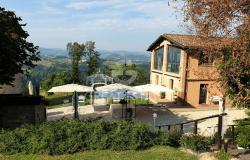To mark the International Day of Commemoration in memory of the victims of the Holocaust, January 27, we take a stroll through Jewish Ferrara, a city with one of the longest existing Jewish communities in Italy.
The Jewish community of Ferrara has existed since the Middle Ages; it was especially vibrant in the 15th and 16th centuries, when the Emilia-Romagna city was ruled by the powerful Este dynasty, who refused to confine Jews to a ghetto even as other Italian cities were doing so.
Its status however rapidly deteriorated from 1598, when the Este moved to Modena and the city came under papal control. The Jewish settlement, spread over three streets forming a triangle near the Cathedral, became a ghetto in 1627. The ghetto lasted until the period of the Italian unification in 1859, except for a few years under Napoleon and during the 1848 revolution.
Today, you can explore the Jewish history of Ferrara by starting at MEIS — the National Museum of Italian Judaism and the Shoah, a museum that documents the history of Jews in Italy from the Roman Empire through the Holocaust. Ferrara was chosen as the museum's location right because Jews have continuously lived in the city since as early as the year 1227.
After visiting the museum, the next stop on your Jewish tour of Ferrara should be the area of the former ghetto, around Via Mazzini, Via Vittoria and Via Vignatagliata, a picturesque area of narrow cobblestone streets and terracotta buildings, typical of Ferrara.
Via Mazzini was the main street of the ancient ghetto, where Jewish-owned shops were concentrated. The buildings have retained their original structure. At Via Mazzini no. 95 is the Synagogue built in 1485. Except for the commemorative plaques on the facade, the building looks like the surrounding houses.
The charming Via Vittoria has small buildings, internal courtyards and picturesque balconies; mentioned in the novel “The Garden of the Finzi-Contini” by Italian novelist Giorgio Bassani, it crosses the residential area of the Jewish ghetto.
On Via Vignatagliata an inscription indicates the small school that welcomed Jewish students after 1938. The houses are simple and lean against each other.
In front of the Cathedral in the heart of Ferrara is the Colonna di Borso d’Este, also known as the Jewish column; it is largely composed of layers of tombstones from ancient Jewish cemeteries.
Finally, the Jewish Cemetery, located within the walls bordering the Christian cemetery of the Certosa, is accessed from Via delle Vigne and is set in a large garden.



